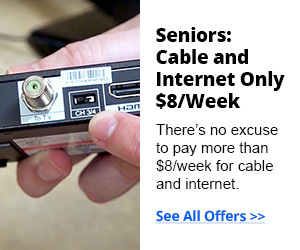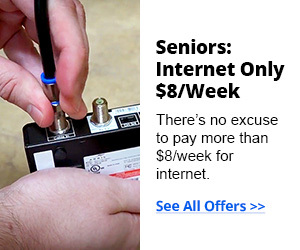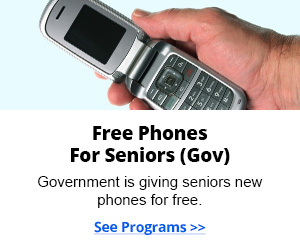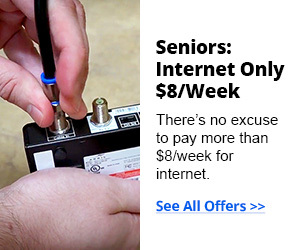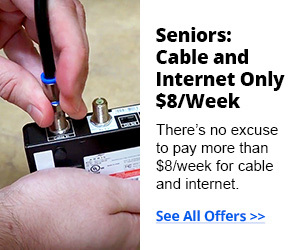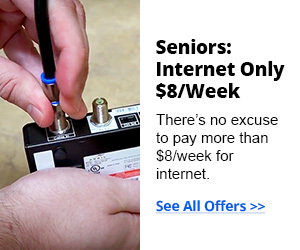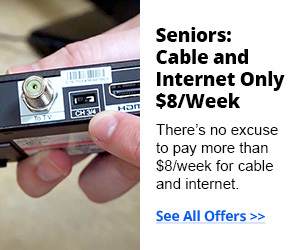40 Things That Everyone Had In The ’70s That No One Sees Today
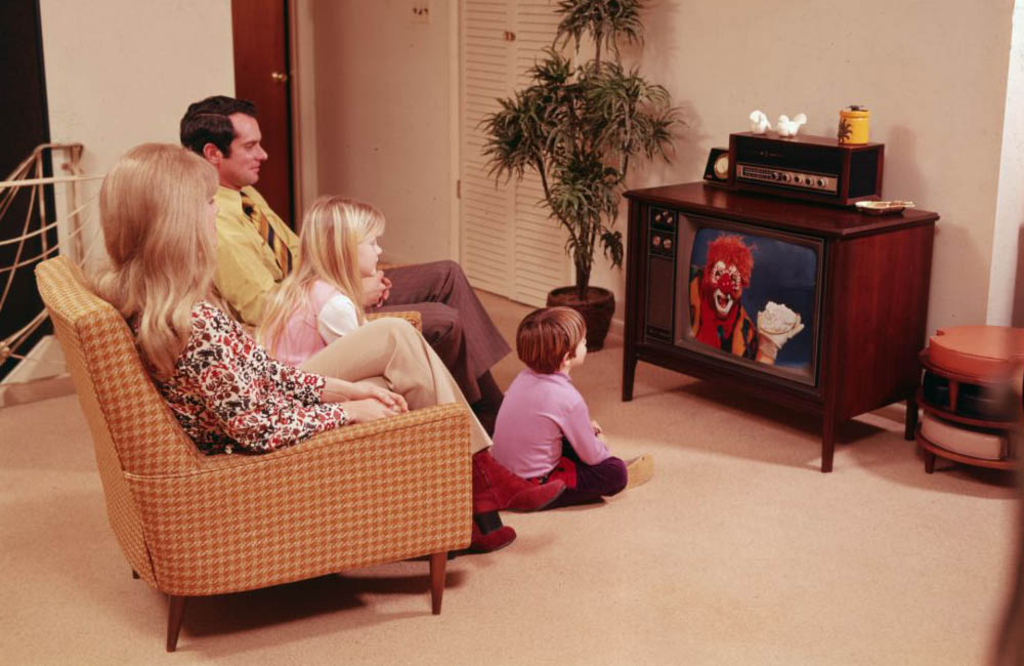
The 1970s were a colorful time in American history, both figuratively and literally. If you grew up in this era, then you remember that the ‘70s were famous for the rise of disco and bell bottoms. You also know that this era was full of cultural change, technological innovation, and, as with any time in history, unique struggles.
Though 1970s fashion has been thoroughly discussed, the unique home features of houses in the ‘70s deserve a mention, too. The features on this list are nostalgia-inducing, but they’re not all a thing of the past. You can still find these designs, appliances, and other treats at stores like Home Depot, Sherwin Williams, Lowe’s, and more – although they may have had updates! Read on to get a blast from the past.
1. 8-Track Tapes
Where It Was Sold: Radio Shack, Best Buy, Ford Dealerships
Original Est. Cost: $30*
Current Est. Value: $5-$20 per lot*
In the 1970s, brands like Pioneer, Sony, Panasonic, GE, Akai, and more sold 8-track tape players for around $30 apiece. This magnetic tape recording tech was popular from the mid-‘60s to the early ‘80s. It was rendered outdated by the CD, which would, in turn, become a thing of the past because of iPods and, later, smartphones.

A big reason that 8-track players were so successful was because of the auto industry. In 1965, Ford introduced 8-tracks that could be installed right in your car by the factory or dealer. Home players were introduced a year later and, for decades, people loved the convenience and portability that these sound systems offered.
Americans Over 64 Could Get Additional $900 Spending With New Flex Card Benefit

Americans over 64 could now be eligible to get a Flex Card and receive additional $900 spending towards things they need.
How Do You Qualify?
The opportunity to apply for this benefit is ending soon and thousands of people have already taken advantage.
Remember, it costs you nothing to check and only takes a few minutes to see if you qualify.
This free consumer service is helping Americans get new benefits. It's costs nothing to check if you qualify and there's no obligation, so it’s definitely worth your time.
Step 1) Select your age
Step 2) Answer a few questions
Step 3) See if you qualify
Select Your Age:
2. Pet Rocks
Where It Was Sold: Toys R Us, Walmart, Macy’s, Toy Stores
Original Est. Cost: $4*
Current Est. Value: $60*
In 1975, America was caught in the thrall of the pet rock. While the idea of owning a rock as a pet might seem silly, over one million pet rocks were sold for $4 each. This made their creator, ad exec Gary Dahl, a millionaire. These smooth stones came from Baja California, and they were marketed like real pets.

They even came with a cardboard box and care instructions. The fad lasted for six months, wrapping up in the Christmas season of ’75. The Pet Rock made Dahl rich and famous, so much so that he said in a 1988 interview that he almost wished he never created the hit fad toy.
Americans Over 25 Could Get $250,000 Life Insurance Policy (If They Do This)
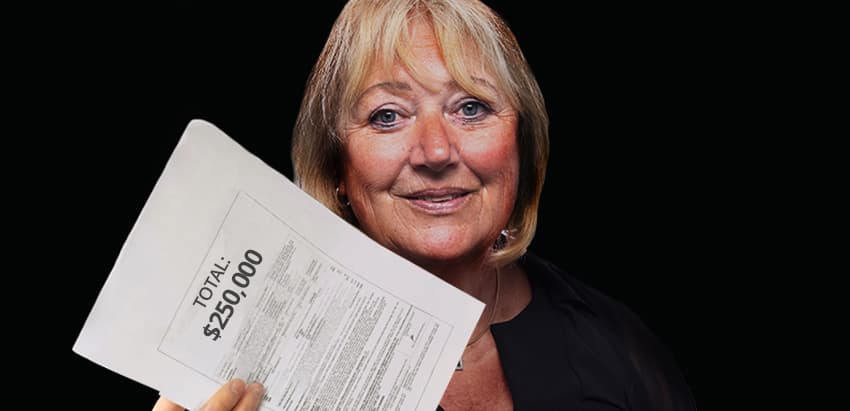
If you're currently over 25 years-old, this little-known policy could provide you with $250,000 to help protect your loved ones. Many Americans could qualify for this, but very few even know it exists.
This policy can cover your debt, help pay off your bills, cover living expenses, and pay for final expenses. It also ensures your loved ones don’t inherit your debts or are burdened with a huge bill down the line.
If you meet at least 2 of these requirements, you may be eligible for a $250,000 policy.
If You:
-
Are Currently a US Citizen/Resident
-
Born Before 1998
-
Live In A Qualified Zipcode
You may be eligible for a $250,000 life insurance policy. No physical exam is required and instant approval policies are available. You'll be shocked to see how much you could qualify for if you're eligible!
3. Wood Paneling
Where It Was Sold: Lowe’s, Home Depot, Walmart
Original Est. Cost: $2-$8 per panel*
Current Est. Value: $12-$40 per panel*
When you ask someone what décor trend they think of when they reminisce about the 1970s, they’re probably going to list “wood paneling” as one of their top five. Now, wood paneling brings down a home’s value, and there are quite a few how-to articles about covering up this décor mistake.

Paneling From This Era Was Usually Made From Pressed Fiberboard Or Plywood That Was Designed To Look Expensive. And Don’t Forget, This Wood Often Was Covered With A Glossy Coating To Make It Look As Shiny As Possible. That’s Why, When You’re Trying To Paint Over Wood Paneling, You Have To Do A Lot Of Sanding First. Otherwise, Your Primer And Paint Won’t Stand A Chance At Sticking.
Homeowners Can Get A Huge Benefit This July. You Can Check If You Qualify In 60 Seconds.
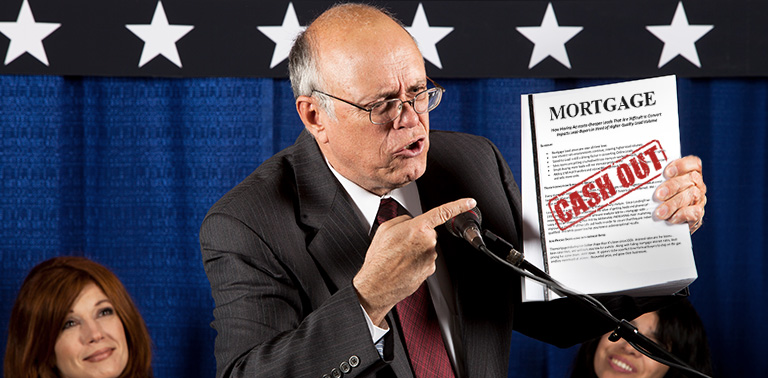
New government-backed program is helping homeowners get up to $185,000 cash-out refinance payment from their home (without selling it) as soon as this July. Millions of Americans could benefit from this, but very few even know about it.
Homeowners can start using the cash however they want. You can use it to pay for gas and groceries, improve your home, take a vacation, or simply retire.
Unfortunately, many American homeowners won’t get their cash out payment. Simply because they don’t know that they could qualify for it. In fact, homeowners with good credit score will qualify for EVEN bigger cash out payment!
How Do I See If I Qualify?
-
You must be a US Citizen/Resident.
-
You must be a Homeowner
-
You must have Good or Excellent credit score
Follow These 2 Simple Steps To Check If You Qualify For Free:
● Step 1: Select your age below and answer a few questions (it takes just 60 seconds)
● Step 2: After you enter some information about your home, you will find out how much you could be entitled to. You will be shocked to see how much you could qualify for! It's an easy and quick way to put money back into your pocket!
4. Electric Fondue Kits
Where It Was Sold: Bed Bath & Beyond, Macy’s, Gimbels, Walmart
Original Est. Cost: $20-$30*
Current Est. Value: $20-$40*
According to Southern Living, it’s high time we brought back this polarizing food trend. Fondue: either you love it or hate it. This was a dinnertime staple of the seventies, and fondue pots hit their popularity peak during the decade.

People Would Fill These Electric Pots With Melted Cheese, Sweet Chocolate, And Hot Oil In Which To Cook Mystery Meat Chunks. Cheese And Chocolate Are To This Day Popular Fondue Options. One Reason That Cheese Fondue Became A Huge Fad Was Because, According To Groovy History, Fondue-Pot-Makers Advertised Cheese As A Super-Healthy Food, Straight From The Ski-Lodge-Happy Swiss Alps.
The U.S. Government Is Buying Solar Panels For Homeowners This July. Check If You Qualify In 60 Seconds.
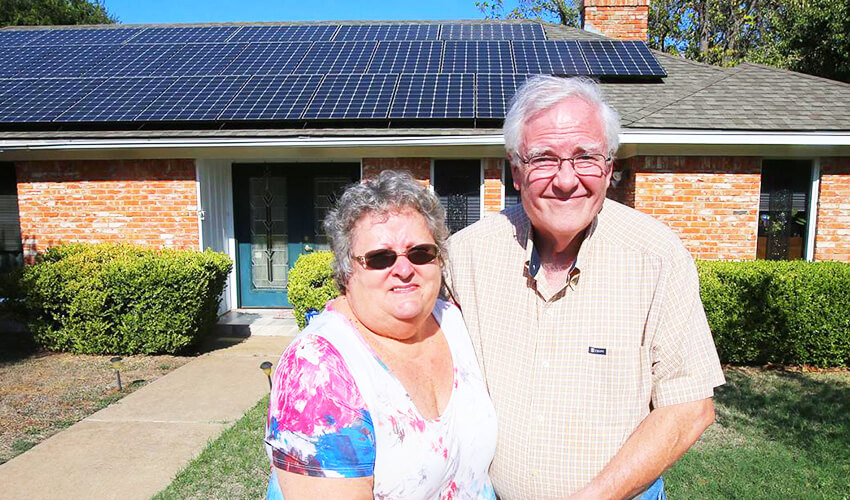
The U.S. government has just announced a new program to encourage as many Americans as possible to go solar and that way contribute to a healthier planet.
This new program is providing incentives and helping homeowners go solar with little to no cost out of pocket.
And if that wasn’t enough, this new program will even hand you up to $8,517 in government incentives.
It means that this week you can get solar panels installed on your house without paying a single dollar out of pocket and also get up to $8,517 in government incentives for saving the planet.
It sounds crazy. But all you need to do is to click the button below and take 60 seconds to answer a few questions. You will be able to generate your own power instead of relying on the grid to keep your lights on. And saving the planet is a bonus.
How Do See If I Qualify?
It's very easy and completely free to check if you qualify to get solar panels installed at little to no cost out of pocket, while getting up to $8,517 in government incentives for doing so. Homeowners can instantly check if their zip code qualifies in 60 seconds.
Simply answer a few questions about your home and instantly find out if you qualify for this government program.
5. Presto Hot Doggers
Where It Was Sold: Radio Shack, Best Buy, Walmart
Original Est. Cost: $15-$20*
Current Est. Value: $25-$31*
How do you cook hotdogs? On the grill? In boiling water? In the oven? If you grew up in the seventies, your parents skipped all that and just electrocuted the hot dog. The Presto Hot Dogger was invented in the early 1970s, and it immediately took off. The Presto is one of a lot of head-scratch-inducing products from that era that became wildly popular.

The Presto Was Sold At Department Stores, Mostly. It Used An Electric Current To Cook Between One And Six Hot Dogs In Just Sixty Seconds. According To People On Reddit Who Ate These Electrocuted, Shock-Wave Weenies, They Didn’t Taste Too Different From Hot Dogs Cooked By Any Other Methods.
Homeowners Are Using This New Roof Replacement Service To Get a New Roof in 2023
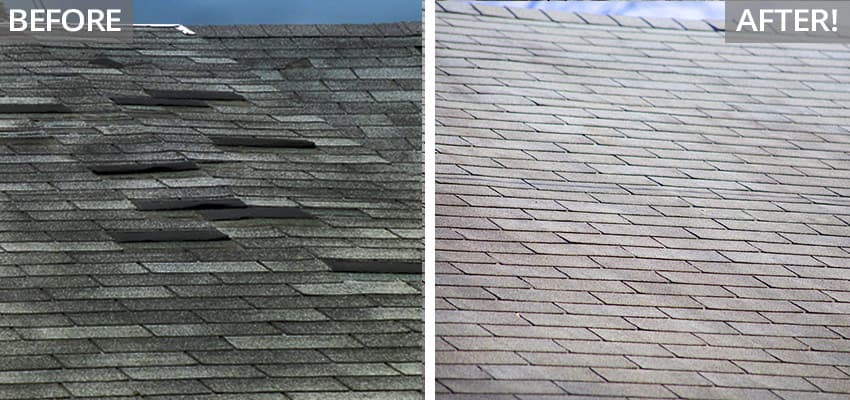
Homeowners should never have to pay full price for roof repairs again. In the past roofing work could cost a fortune. Worse yet, a bad roof can lead to tremendous damage, mold, animal infestation and other expensive situations that could be avoided with proper home maintenance.
No doubt replacing a home’s roof is an easy thing to put off “until next season,” especially since traditionally the cost could come with quite the price tag.
But thanks to this brilliant new website, it no longer has to cost homeowners an arm and a leg to get the roof replaced or repaired. In fact, homeowners that use the site will never have to pay full price for roof repairs again.
Now homeowners can get their roof replaced while saving thousands of dollars in the process by taking advantage of all special discounts, rebates and incentives available in their area.
Every homeowner should check to see how cheap it can be to get a new roof in their area.
6. TV Dinners
Where It Was Sold: Kroger, Winn-Dixie, Piggly-Wiggly, Safeway
Original Est. Cost: $0.50-$2*
Current Est. Value: $3-$6*
Now, a TV dinner is pretty much maligned by the majority of nutritionists who either scorn this frozen food for having too much sodium or point out that you’re not supposed to eat in front of the TV. But, in the ‘50s, ‘60s, ‘70s, and ‘80s, there were no such naysayers. People ate their Swansons with reckless abandon.

The Swanson TV Dinner Hit Grocery Stores In The Fall Of 1953. These Frozen Dinners Were An Instant Hit, Selling Millions Of Units. In The ‘60s And ‘70s, Their Popularity Only Increased. When Campbell’s Came Out With A Microwavable Tray, That Cut This Meal Prep To Mere Minutes In The 1980s. Still, To This Day, People Make Frozen Dinners All The Time.
7. Farrah Fawcett Posters
Where It Was Sold: Camelot Music, Sam Goody, Record Stores
Original Est. Cost: $0.50-$1*
Current Est. Value: $20-$30*
Actress Farrah Fawcett was the it girl during the 1970s. She began her career in 1969, and she amassed six Golden Globe Awards, four Emmy Awards, and a ton of international fame. Fawcett catapulted to stardom when she was on the first season of Charlie’s Angels, a TV series.

The Actress Also Starred In Hit Movies Like Logan’s Run, The Cannonball Run, The Burning Bed, And Many More. The Poster Of Farrah Fawcett In A Red Swimsuit Is One Of The Best-Selling Posters Of All Time, Selling Twelve Million Copies. The Actress Received Quite A Chunk Of Change From Those Posters, Nabbing 40% Of The Profits From The Iconic Image.
8. Sunken Living Rooms
Where It Was Sold: Construction Companies, Architectural Firms
Original Est. Cost: $600-$3,000*
Current Est. Value: $5,000-$25,000*
Some designers want to bring this trend back, while others fight tooth-and-nail to prevent just that from happening. Sunken living rooms are certainly not as popular now, though there has been a slight resurgence in the trend. Called conversation pits, these recessed common areas started making a splash in the 1960s.

They Spread Like Wildfire, And, For Two Decades, They Were The Best Way To Kick Back With Your Family And Entertain Guests. You’d Have To Head Down Two Or Three Steps To Get To Your Home’s Sitting Area, But Those Steps Served As A Way To Define The Space In Which You Talked And Laughed With Family And Friends.
9. Egg Chairs
Where It Was Sold: Aarnio Originals (This Specific Chair)
Original Est. Cost: $943*
Current Est. Value: $12,400*
The Ball Chair debuted in 1963, and it was considered a revolutionary example of taking Space Age design and incorporating it into your home. It debuted in 1966 at the Cologne Furniture Fair, and it made its mark as a famous, classic piece of Finnish design. The Ball Chair was even in a few movies and music videos.

For Those Who Couldn’t Afford The Steep Price Of The Ball Chair, There Were Plenty Of Copycats. Egg-Shaped And Ball-Shaped Chairs Were Spotted In Lots Of Homes In The 1970s, And You Could Find Them At Pretty Much Any Major Furniture Store As A Staple.
10. Atari Video Games Console
Where It Was Sold: Radio Shack, Best Buy
Original Est. Cost: $189.95*
Current Est. Value: $60-$80*
In 1977, the gaming world changed when Atari came out with its Atari Video Computer System. This home video game console was responsible for popularizing video games, and every single kid in America begged their parents for an Atari for Christmas that year. When the Atari came out, it was priced at $190.

That’s The Equivalent Of $850 In Today’s Money. Though Atari Dominated Gaming In The Late 1970s And Early 1980s, It Faltered Amid Competition From Other Game Developers And Their Consoles. Also, Atari’s Management Made A Series Of Bad Game-Production Decisions That Ended Up Sinking Atari, Inc. And Ending Its Era.
Americans Over 64 Could Get Additional Spending With New Flex Card Benefit

Americans over 64 could now be eligible to get a Flex Card and receive additional $900 spending towards things they need.
How Do You Qualify?
The opportunity to apply for this benefit is ending soon and thousands of people have already taken advantage.
Remember, it costs you nothing to check and only takes a few minutes to see if you qualify.
This free consumer service is helping Americans get new benefits. It's costs nothing to check if you qualify and there's no obligation, so it’s definitely worth your time.
Step 1) Select your age
Step 2) Answer a few questions
Step 3) See if you qualify
Select Your Age:
11. Wall Phones
Where It Was Sold: Radio Shack, Best Buy
Original Est. Cost: $900*
Current Est. Value: $45*
If you watch any movie from the 1970s or around that time, chances are that you’re going to see a wall phone in a scene or two. Remember these phones? They hooked up to the wall via a long cord attached to a handset. They were the polar opposite of the sleek, convenient cell phones that we use today.

Motorola Was One Of The Most Popular Phone Brands At The Time, And The Company Took Things A Step Further In The Early 1970s When It Introduced The First Portable Phone. A Decade Later, The FCC Approved The DynaTAC 8000X, The First Cell Phone. It Was Huge And Unwieldy, And A Lot Of People Preferred Their Wall Phones.
12. Sea Monkeys
Where It Was Sold: The Sea Monkey Aquarium, Toys R Us
Original Est. Cost: $1.75* (Postage Included)
Current Est. Value: $8.99*
The ‘70s was full of strange toys, and Sea Monkeys were definitely near the top of the list, as far as uniqueness goes. Sea Monkeys were brine shrimp sold as novelty pets. They were sold as eggs you could add to water, and they cost $1.25 plus postage from the “Sea Monkey Aquarium.” Over time, these Sea Monkeys would grow to a half-inch long.

These Pets Became Popular Because They Were So Small And Required Little-To-No Attention. Sea Monkeys Were Marketed As An Alternative Pet For People Who Weren’t Able To Have A Dog, Cat, Or Anything Larger And More Complicated.
13. Station Wagons With Wood Trim
Where It Was Sold: Ford, Chevy, VW, and Jeep Dealerships
Original Est. Cost: $3,542-$6,847*
Current Est. Value: $1,800* (1973 Kammback)
The Woodie was a popular station wagon body type, and the appearance of polished wood on a car made it look less like an automobile and more like a piece of furniture. In the 1970s, cars no longer used actual wood construction, but they still accented the exterior with it. For example, the Ford Pinto Squire came out in the early 1970s with wood trim.

Chevrolet, Not To Be Outdone, Came Out With The Chevy Vega Kammback In 1973. Other Cars In The Seventies That Used The Woodie Bodywork Included The Chevy El Camino Estate, Chevy Suburban, Volkswagen Rabbit, And Jeep Wagoneer.
14. Wooden Frame Furniture
Where It Was Sold: Macy’s, Levitz Furniture, Pottery Barn, Ashley Furniture
Original Est. Cost: $100-$500* (Armchair Price)
Current Est. Value: $200-$1,000*
Wood frame furniture was a common staple of 1970s homes, and furniture and department stores would have been remiss if they sold a piece without a telltale showing of beech, mahogany, white ash, or birch. White and red oak, hard maple, and American elm were also often used for framing furniture.

When you look at an image of vintage furniture, the wood framing is often an easy indicator that the piece is dated. Even armchairs couldn’t escape this feature. As you can see, this photo is classic ‘70s, through and through, from the interesting chair pattern to the bottles of Faygo on the floor.
15. Bar Cabinets
Where It Was Sold: Ashley Furniture, Levitz, Macy’s, Walmart
Original Est. Cost: $100-$1,000*
Current Est. Value: $225-$1,000*
Bar cabinets combined two tried-and-true staples of the 1970s: wood and liquor. Bar cabinets were short, squat cabinets designed solely to hold copious amounts of alcohol. These cabinets were often designed specifically for entertaining, with cabinet shelves that opened up like butterfly doors.

So, what drinks would you find in a ‘70s bar cabinet? Party Seven and Watney’s Red Barrel were two brands that definitely made an appearance. Additionally, the seventies were the decade where more and more people were consuming branded lager and wines like Black Tower, Blue Nun, and Mateus Rose, all of which were to be found in many homes’ liquor cabinets.
16. Crock Pots
Where It Was Sold: Walmart, Bed Bath & Beyond, Best Buy
Original Est. Cost: $15-$30*
Current Est. Value: $32*
These slow-cookers are called Crock-Pots. This trademark name is owned by Sunbeam, but Crock-Pots have become so popular, a lot of people use the name interchangeably with “slow cooker.” Crock-Pots became popular after WWII as more and more women worked out of the home.

These countertop appliances cooked dinner for you while you were away, letting you come home to a nice, home-cooked meal at the end of the day. By the 1970s, Crock-Pots were found in every home. Popular brands throughout the decades have included Cuisinart, GE, Hamilton Beach, Magic Chef, KitchenAid, American Electric (now-defunct), and West Bend Housewares.
17. Orange Everywhere
Where It Was Sold: Everywhere
Original Est. Cost: Various
Current Est. Value: $0
Every day was Halloween when you were an interior decorator in the 1970s. During this era, the Earth Tones Movement began in earnest. This was likely because the first Earth Day took place in the 1970s. Colors like orange, mustard yellow, harvest gold, avocado, rust, beige, and earthy brown were found in ‘70s homes and offices in solids and patterns.

Taking a psychological look at the Earth Tones Movement, the country, at the time, was recovering from the turbulence of the Vietnam War. People wanted peace and calm, both in their homes and in the world, and warm earth tones and dark wood reflected those desires.
18. Giant TVs
Where It Was Sold: Radio Shack, Best Buy, Walmart
Original Est. Cost: $500*
Current Est. Value: $6,300* (RCA Console)
A solid, twenty-one-inch color TV console would cost you around $500 in the ’70s. In today’s money, that’s about $3,300. You might remember that televisions from the seventies were huge. Their screens were small compared to the large, 100-pound, wooden cases in which they came. As time progressed, screen sizes increased while the rest of the TV grew smaller.

The reason TVs from decades ago were so large was because the technology hadn’t caught up yet. The bigger the screen, the larger the encasement needed to be. Flatscreens from LG, Sony, Panasonic, Samsung, and more are now a bit more fragile, but you won’t throw out your back lifting them.
Americans Over 64 Could Get Additional Spending With New Flex Card Benefit

Americans over 64 could now be eligible to get a Flex Card and receive additional $900 spending towards things they need.
How Do You Qualify?
The opportunity to apply for this benefit is ending soon and thousands of people have already taken advantage.
Remember, it costs you nothing to check and only takes a few minutes to see if you qualify.
This free consumer service is helping Americans get new benefits. It's costs nothing to check if you qualify and there's no obligation, so it’s definitely worth your time.
Step 1) Select your age
Step 2) Answer a few questions
Step 3) See if you qualify
Select Your Age:
19. Short Shorts and Tube Socks Combo
Where It Was Sold: Macy’s, Kohl’s, Walmart
Original Est. Cost: $5-$10*
Current Est. Value: $10-$150*
Summertime in the 1970s was full of short shorts and tube socks. If you went into the dresser drawers of a ‘70s house, you were sure to find this outfit lying there. Even men loved short shorts and tube socks, and this fashion was, truly, the antithesis of the 1990s.

These tube socks were made famous by sports stars like Kareem Abdul Jabbar, Pele, Dr. J., and Bjor Borg. Soon, this uniform hit its peak in the 1970s, but the fad wouldn’t last. Ankle socks replaced tube socks, while longer shorts became in style. Though short shorts are still around, tube socks have mostly been left in the dust.
20. Simon
Where It Was Sold: Walmart, Macy’s, Gimbels, Toys R Us
Original Est. Cost: $25*
Current Est. Value: $100-$150*
In 1978, Simon came out with much fanfare. Made by Milton Bradley, the toy-seller hosted a midnight release party at the elite disco in NYC called Studio 54. Simon immediately became a huge hit. The toy used tons and lights that required the user to use short-term memory skills to repeat a sequence.

Though simple, people loved the toy. When it was released, the price tag was $25 (about $92 in today’s dollars). To this day, original Simons from the late seventies have the power of nostalgia behind them, selling for $100 to $150 on collectors’ websites.
21. TV Dinner Tray Tables
Where It Was Sold: Levin Furniture, Walmart, Kmart
Original Est. Cost: $10-$20*
Current Est. Value: $40-$90 per set*
If you think back to the 1950s and 1960s, you probably picture a dinner table full of people. People didn’t always eat in front of the television—that trend really began to pop up in the seventies. People eating in front of the TV had their trusty tray table always on hand.

These vintage tray tables were portable and usually questionably designed. You can find vintage tray table sets on eBay for $40-$90. Though tray tables are still around to this day, nothing can compete with the uniqueness of the tables’ patterns from the 1970s (hint: there were a lot of florals and clashing colors).
22. Photo Booths
Where It Was Sold: Malls
Original Est. Cost: $1-$5*
Current Est. Value: $5-$10*
Photo booths were everywhere from the 1950s until the 1980s, and Hot Shots made a bundle from their booths, which you could often find in malls in the ‘70s. At the time, photography wasn’t as affordable as it is today, so a photo booth provided an easy, fast way to get printed pictures of you and your family and friends.

Over time, cameras and film became easier to afford, so these photo booths lost some luster. Though not quite as much of a fad today, you can still find these booths in most malls, but they are a bit more expensive to use than they were in the ‘70s.
23. Metal Lunch Boxes
Where It Was Sold: Macy’s, Gimbel’s, Walmart, Toys R Us, Grocery Stores, Mail Order Catalogs
Original Est. Cost: $2-$5*
Current Est. Value: $10-$110*
Lunchtime in the 1970s, if you were a kid headed off to school, meant a metal lunchbox. More often than not, this lunchbox had designs of your favorite bands, movies, and cartoon characters on the front.

These lunch boxes were a hit in the ‘70s (and for a few decades before and after). Though they’re not as ubiquitous now, you might be able to resell your vintage metal lunchbox for a pretty penny. Prices vary wildly on eBay, but King-Seeley metal lunch boxes featuring Nancy Drew, UFOs, Star Wars, and more can reach as high as $80 or more. You’ll get an even better price if you have the thermos to go with it.
24. View-Masters
Where It Was Sold: Sawyer’s, Toys R Us, Macy’s, Walmart, Toy Stores
Original Est. Cost: $15-$30*
Current Est. Value: $50-$100*
View-Master is one of the most famous toys of the second half of the twentieth century. The trademark was developed by William Gruber for Mattel. It was introduced in 1939, and people loved the fact that you could see 3D images just by looking into the camera.

The 1970s brought with it the Talking View-Master, which had audio technology in addition to the reels. These View-Masters were more sophisticated than other ones. The View-Master Rear Screen Projector was a pricey tabletop projector that went along with the classic toy. Now, you can resell your vintage View-Master for $50 to $100. Even to this day, people love this toy.
25. Pac-Man Arcade Game
Where It Was Sold: Arcades
Original Est. Cost: $0.10 a game*
Current Est. Value: $337-450*
Pac-Man is one of the most popular arcade and video games of all time. On its own, the brand is worth $7.6 billion. A Pac-Man arcade video game costs anywhere from $337-$450 if you want to have it in your house to bring back some of the classic ‘70s and ‘80s nostalgia.

You couldn’t go to any arcade in the late ‘70s without running into a Pac-Man game. The brand hit a fever pitch in the eighties, and it has remained pretty popular (albeit in app form now). Back in the ‘70s, you could play Pac-Man for $0.10 a game or $0.25 for three games.
26. Vinyl Records
Where It Was Sold: Record Stores, Camelot Music, Sam Goody, Peaches Records & Tapes
Original Est. Cost: $6-$7*
Current Est. Value: $10-$100*
Putting a vinyl record on the player was the number-one way to party in the 1970s. Millions of people owned a record player back then, and you couldn’t find a house in the seventies that didn’t have at least a radio, if not an RCA.

Some of the biggest records of the decade included “Born to Run” (Bruce Springsteen, 1975), “Blue” (Joni Mitchell, 1971), “Bridge Over Troubled Water” (Simon & Garfunkel, 1970), “Hunky Dory” (David Bowie, 1971), “What’s Going On” (Marvin Gaye, 1971), and more. You can find a lot of old vinyl records from the seventies on eBay for $10 to $30 apiece.
27. Transistor Radios
Where It Was Sold: Best Buy, Radio Shack, Electronics Stores
Original Est. Cost: $50*
Current Est. Value: $50-$90*
The transistor radio is a portable, small receiver that uses transistor technology. The transistor was invented in the 1940s, and transistor radios became popular in the 1960s and ‘70s. They were the most-used electronic communications device in the world during those two decades, with millions sold worldwide.

Best Buy, Radio Shack, and other electronics stores couldn’t keep these radios from flying off the shelves. In the 1970s, these radios usually sold for around $50, but now, you can resell them for $50 to $90, depending on the make and model. Though dated, these hardy little devices are still perfectly usable and functional.
28. Tiger Beat Magazine
Where It Was Sold: Grocery Stores, Newsstands, Walmart
Original Est. Cost: $0.25*
Current Est. Value: $10-$20*
Remember Tiger Beat? This teen fan magazine was first published in the fall of 1965, and it had a decades-long run, issuing its final copy in the winter of 2019. Published by The Laufer Company. Tiger Beat was known for its teen idol gossip, cut-and-paste collage covers, and articles on movies, music, and fashion.

You can still find these issues on eBay, though they sell for $10 to $20 now. In the seventies, you could pick them up at stores for just $0.25 apiece. Laufer Media was great at dominating the teenage-girl market, and that explains this magazine’s decades-long popularity.
29. Polaroid Cameras
Where It Was Sold: Radio Shack, Best Buy, Walmart, Mail-Order Catalogs
Original Est. Cost: $180*
Current Est. Value: $40-$150*
In late 1972, Polaroid released a camera that would change the way the world thought about photography. The seventies was a huge heyday for consumer photographers who wanted to take their photos themselves, no professional necessary. That year, Polaroid came out with the SX-70.

They sold it for $180 (about $1,166 in today’s money). Each film pack of ten pictures costs $6.90 ($45, adjusting for inflation). Though this high price limited the demand, Polaroid was still able to sell 700,000 units by the middle of 1974. The one-step instant camera was a huge hit, and families scrounged to save enough money to buy this wonder gadget.
30. Clackers
Where It Was Sold: Toys R Us, Macy’s, Toy Stores
Original Est. Cost: $0.50*
Current Est. Value: $35*
Clackers were a popular toy in the sixties and seventies until people realized that they had the potential to be super dangerous. These toys consisted of two balls tethered together by a piece of string, and you could whirl them around, and they would produce a satisfying thunk when the balls hit one another.

Alas, the original version of these toys was banned in 1968 because the balls shattered upon impact, causing kids to get hurt. In 1968, the company, after getting sued, reworked its product, changing the material in the balls to plastic. Interestingly enough, Clackers became popular in Egypt in 2017, until they were confiscated by the police because they were considered offensive. This toy has had quite a history, from mechanical hazards to offensive objects.
31. Original Sony Walkmans
Where It Was Sold: Radio Shack, Best Buy, Walmart, Electronics Stores, Mail-Order Catalogs
Original Est. Cost: $150*
Current Est. Value: $800*
When the Sony Walkman came out in 1979, it cost $150 (around $613 in today’s money). The portable audio player has become one of the most recognizable gadgets from the latter half of the twentieth century, and it was so popular that its name became synonymous with personal audio players.

In 2010, production of the Walkman stopped. By that time, Sony had made 200 million of these audio players. The Walkman brand has since expanded to include audio devices, CD players, phones, and more. Original Walkmans from 1979, unused and in pristine condition, can resell for as much as $800 on collectors’ sites.
32. Platforms
Where It Was Sold: Thom McAn, Macy’s, Payless Shoe Store, Local Shoe Stores
Original Est. Cost: $20*
Current Est. Value: $50-$100*
Platform shoes were total party shoes in the ‘70s. Though they had had some popularity in the U.S., U.K., and Europe during the 1930s, ‘40s, and ‘50s, that buzz was nothing compared to the popularity they enjoyed in the ‘60s, ‘70s, and ‘80s.

Platforms were advertised in Seventeen and other popular magazines, and they were popular with women in their late teens and twenties. They’d wear these shoes to the disco, often adding glitter or tiny lights to draw attention to themselves on the dance floor. However, these shoes were gender neutral, as artists like David Bowie and David Johansen rocked platforms onstage, too.
33. Colorful Tupperware
Where It Was Sold: Tupperware Parties, Direct Marketers
Original Est. Cost: $5-$10*
Current Est. Value: $10-$30 per set*
Tupperware brings in around $2.26 billion in revenue every year, and the company has had a long run in the packaging industry. It was founded in the 1940s, and it has become synonymous with storing food. The company is known for its selling strategy, which uses direct marketing to sell pieces to buyers.

People loved their Tupperware parties in the 1970s, and the brand became popular with women, especially. Tupperware ladies traveled door to door to sell these containers, turning retail into a social event. In the seventies, brightly-colored Tupperware became in fashion, and you’d be hard-pressed to find a household that didn’t have these colorful containers in its cabinets.
34. Tang
Where It Was Sold: Grocery Stores, Walmart
Original Est. Cost: $0.50*
Current Est. Value: $3.18*
Tang first came out in the late 1950s, but this orange drink wasn’t popular until NASA sent it on a space flight with John Glenn in 1962. This Space Age popularity boost worked wonders for Kraft Heinz in the commercial market, though, reportedly, the astronauts weren’t too fond of the taste (it likely got old after a while).

The same person who created Tang, William Mitchell, invented Cool Whip, Pop Rocks, and several other convenience foods. You’d be hard-pressed to find a 1970s house that didn’t keep a store of Tang in the pantry, ready to mix whenever company came over.
35. Rollerskates
Where It Was Sold: Macy’s, Gimbel’s, Walmart, Shoe Stores, Hobby Stores
Original Est. Cost: $25-$50*
Current Est. Value: $75-$200*
People loved roller skating in the 1970s, and this groovy era was the heyday of this hobby. You could find everybody at the rink on Friday and Saturday nights in the seventies, likely wearing tube socks and short shorts with their skates, if it was the summer.

Skating was also popular in the eighties, and everyone, including movie stars, pop singers, athletes, and more were endorsing roller skate brands left and right. Though hobbies have changed since then, you can still find roller rinks around most major cities. It’s up in the air whether roller skating will ever have another supernova popularity streak the way it did in the seventies and eighties.
36. Fisher Price Toys
Where It Was Sold: Toys R Us, Kmart, Mail-Order Catalogs, Macy’s
Original Est. Cost: $15*
Current Est. Value: $80*
Fisher-Price has been an important part of American culture since its inception, and it has released hit toys every single decade. In the 1970s, one of its most popular toys was its Family Camper. The toy pictured here was released in 1972.

It featured a Play Family Camper, a four-person family, and their dog, as well as a bunch of other cute little accessories. You can find this toy in a complete set on eBay for $80. It’s rare to find the set without any of its pieces missing, hence the high price. If you own this vintage toy and it is in good condition, you could make a nice chunk of change.
37. Baseball Card Collections
Where It Was Sold: Toys R Us, Grocery Stores, Cereal Boxes, Mail-Order Catalogs, Hobby Shops
Original Est. Cost: $0-$5*
Current Est. Value: Varies Based On The Card
Baseball has been an American pastime for over a century, and, in addition to watching and playing the game, people love collecting baseball cards. These cards can be a lucrative hobby, with some fetching hundreds, if not thousands, of dollars.

In the ‘70s, you could find these cards anywhere—in cereal boxes, toy stores, hobby shops, and mail-order catalogs. Valuable cards from this era feature stars like Pete Rose, Nolan Ryan, Johnny Bench, Reggie Jackson, Roberto Clemente, and more. If you have baseball cards from this era, you might want to price-compare them on hobby sites or get them appraised. Who knows? You could be sitting on a gold mine.
38. Barbie Dolls
Where It Was Sold: Macy’s, Walmart, Toys R Us, Kmart, Toy Stores, Sears
Original Est. Cost: $10*
Current Est. Value: $20-$140*
Technically, Barbies have been popular for many years, not just 1970-1979. These toys have been a windfall for Mattel, which has sold billions of them throughout the decades. In the 1970s, Barbies like Gold Medal Barbie, Fashion Photo Barbie, Ballerina Barbie, Kissing Barbie, Mod Hair Ken, Growing Up Skipper, Quick Curl Barbie, and more were some of the most popular.

And the most lucrative on resale. For example, there is a Vintage 1970 Mattel Live Action Barbie up for grabs on eBay for $116.50. Another, the 1970 Walking Jamie Doll, sold exclusively at Sears, is listed for $125.
39. Bedroom Shelving Sets
Where It Was Sold: Macy’s, Gimbels, Home Depot, Lowe’s, Ashley Furniture
Original Est. Cost: $500-$2,000*
Current Est. Value: $800-$2,000*
Though the seventies was full of intriguing, controversial design choices, you can’t argue with this one’s practicality. Bedroom shelving units provided a functional centerpiece for the room, acting as both a headboard and storage unit. You could find these units at furniture stores for $500 to $2,000, depending on how elaborate they were.

Of course, these units were usually made of an earthy-toned wood that dominated the bedroom. If you didn’t want to head to the furniture store to pick up one of these massive shelves, you could always order it from a department store catalog, like the one from Macy’s or Gimbels.
40. Classic Cook Centers
Where It Was Sold: Home Depot, Lowe’s (Materials)
Original Est. Cost: $2,000-$5,000*
Current Est. Value: $1,200-$7,000*
After the 1950s, a lot of emphasis was placed on modernizing kitchens that were now, post-WWII, considered dated. No one wanted to have an old kitchen, and the ‘70s had the heaviest emphasis on having a modern kitchen. 1970s kitchens were full of colors and patterns, but they were also practical.

Cooking “stations” became a common feature. These put your oven, stove, and microwave all in one place, usually vertically stacked. Microwave ovens became more widespread in the late ‘70s, as that was when they became affordable. Having your “hot” equipment all in one section of the kitchen was considered a sensible solution for ‘70s architects.



